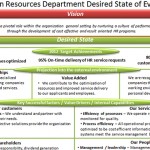How to build your strategy
Strategic planning is the process through which an organization defines what it wants to become and how should this desired state be achieved. Based on the Bain & Company study – “Management Tools & Trends 2013”, about 45% of the respondents conduct strategic planning in their organizations, and their satisfaction with this tool is at 3.9, on a scale from 1 to 5 (5 is the highest level).
Comparing this data in time, it seems that usage has seriously dropped in the last years, despite a constant satisfaction level. However, strategic planning remains the most used tool at global level.
By defining the organizational strategy, the company’s identity is clarified, future directions and priorities are set and a framework for decision making is established. Several steps should be taken for a rigorous strategic planning:
1. Clarify the organization’s current state – a SWOT analysis can be used in order to assess how the company is currently performing. It helps identifying the strong points that can be transformed into value drivers, but also the weaknesses that should be addressed.
2. Analyze the external environment – an environmental scan should be done in order to identify the external factors that can affect the company: economy evolution, political and social factors, the industry’s status and competitors. This will provide a realistic context in which the organization operates, creating the premises to shape the strategy.
3. Create the organizational identity: mission, vision and values – defining these three elements provides a clear image in regards to what the company does, why (mission), what are its aspirations (vision) and moral values.
4. Develop strategic themes – these are the main focus areas of the organization, its strategic directions. They are useful in decomposing the vision into operational actions. Three to five strategic themes should be enough to structure the organizational strategy.
5. Set objectives – each strategic theme is split into more objectives, in order to monitor the evolution towards achieving goals.
6. Allocate KPIs for each objective – through performance indicators and target setting, the organizations gains insights into the current state of performance and the targets that have to be met.
7. Find initiatives – refers to projects that support the achievement of objectives.
8. Review – the strategic plan can be designed for three or five years, but it has to be reviewed in order to ensure consistency with reality and with the changes that happen every day in the organization.
The outputs generated at each step of the process should be reflected the ease of using documents like the Desired State of Evolution, the Strategy Map, the Scorecard, the Portfolio of Initiatives and the Strategy Plan. It is also important to clarify accountability at each activity or process, to ensure an efficient governance and strategy implementation.
Developing a strategic plan should provide better visibility for both managers and external stakeholders in regards to what the company is doing and why. It also outlines a roadmap to follow and ensures consistency in decisions. As it is well said in chess, “Any plan is better than no plan.”
References:
Image source:

Tags: Performance Management, strategic planning, Strategy






